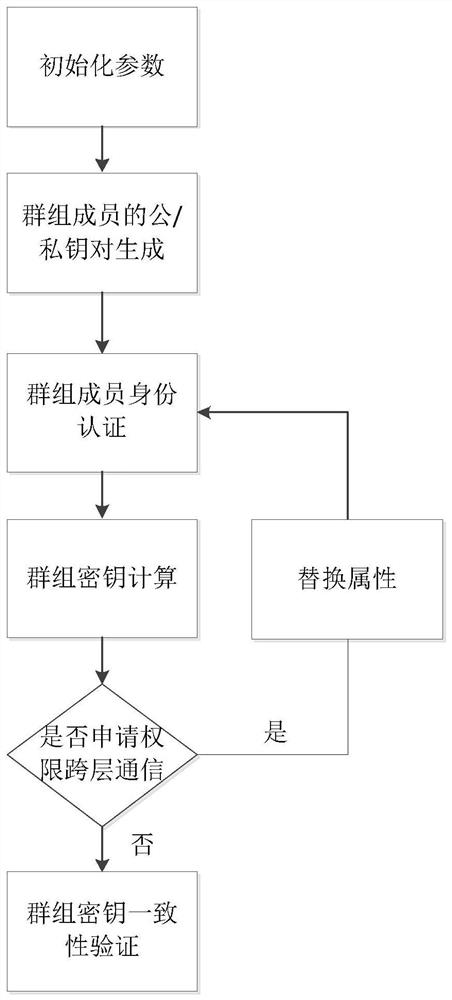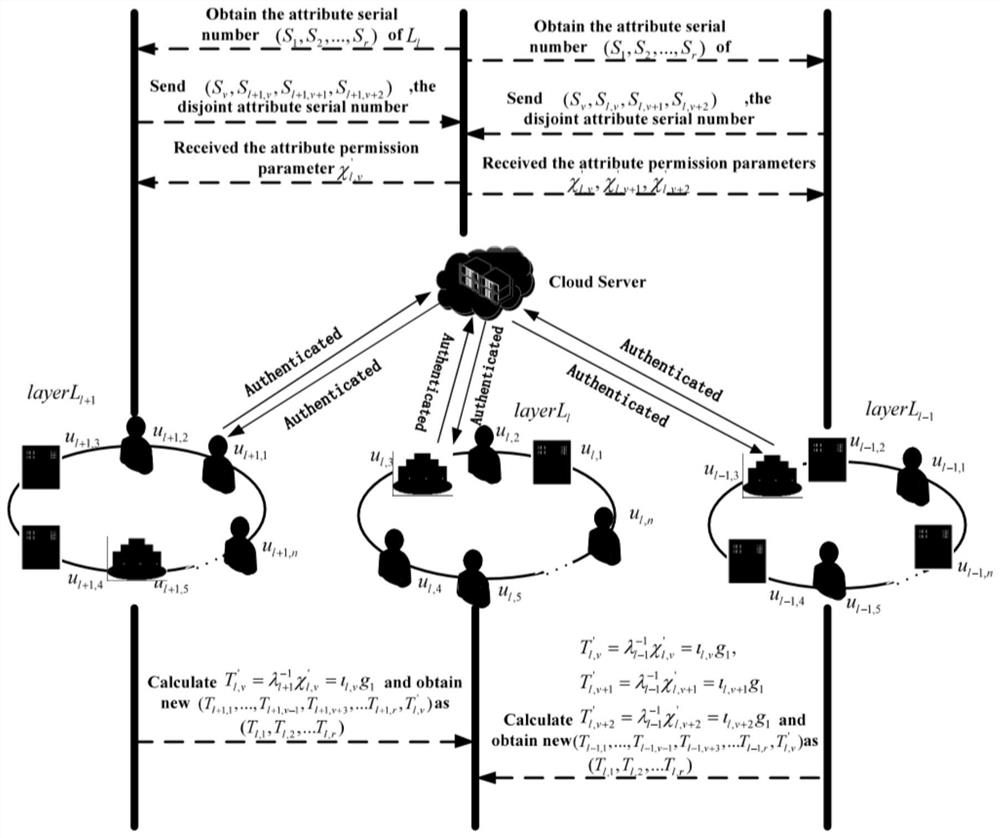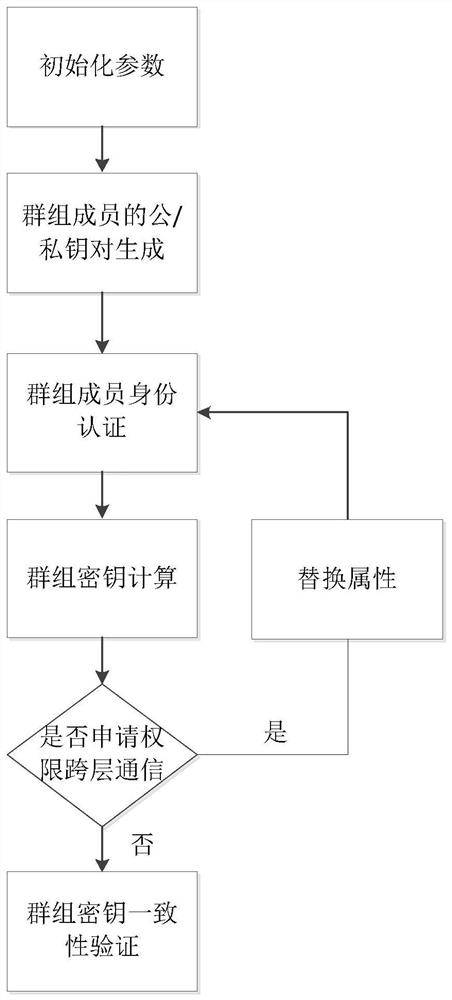A Privacy-Preserving Hierarchical Dynamic Group Key Agreement Method
A technology for group key negotiation and privacy protection, applied in the field of hierarchical dynamic group key negotiation based on privacy protection, which can solve the problems of exposing personal identity information, reducing computing and communication overhead, and being unable to flexibly protect sensitive data. , to protect personal privacy, improve security, and ensure reliability.
- Summary
- Abstract
- Description
- Claims
- Application Information
AI Technical Summary
Problems solved by technology
Method used
Image
Examples
Embodiment 1
[0081] In the case of complex multi-party communication, the authentication center CA in the group needs to authenticate the terminal members of the communication, but when providing identity information, the identity information is easily leaked or stolen. For security reasons, it is necessary to protect the privacy of personal identity when communicating entities are authenticated by multiple parties. When information is shared, the confidentiality, integrity and anti-leakage of communication information should also be guaranteed, and members who comply with the permission policy are required to communicate. In view of this application background, the present invention provides a layered dynamic group key negotiation method based on privacy protection, such as figure 1 The steps are as follows: ① the terminal members participating in the group key negotiation first perform parameter initialization to generate their respective public / private key pairs; ② the terminal members ...
Embodiment 2
[0126] A privacy-preserving hierarchical dynamic group key agreement method, such as figure 1 As shown, in order to illustrate the content and implementation method of the present invention, a specific embodiment is given. In this embodiment, for the convenience of illustration, a three-layer group is set for group key negotiation, each group has 10 members, and the entity set of these 10 members is represented as S={S 1 ,S 2 ,…,S 10 },S 1 ={u 1,1 ,u 1,2 ,…,u 1,10 },S 2 ={u 2,1 ,u 2,2 ,…,u2,10 }, S 3 ={u 3,1 ,u 3,2 ,…,u 3,10 }, the entity set of terminal members is expressed as The identity set of the corresponding group members is expressed as The certification center CA defines the attribute set of all terminal members as ATTR={A 1 ,A 2 ,A 3 }, the ordered attribute set corresponding to the group members is The purpose of introducing details in this embodiment is not to limit the scope of the claims, but to help understand the specific implementation met...
PUM
 Login to View More
Login to View More Abstract
Description
Claims
Application Information
 Login to View More
Login to View More - R&D
- Intellectual Property
- Life Sciences
- Materials
- Tech Scout
- Unparalleled Data Quality
- Higher Quality Content
- 60% Fewer Hallucinations
Browse by: Latest US Patents, China's latest patents, Technical Efficacy Thesaurus, Application Domain, Technology Topic, Popular Technical Reports.
© 2025 PatSnap. All rights reserved.Legal|Privacy policy|Modern Slavery Act Transparency Statement|Sitemap|About US| Contact US: help@patsnap.com



